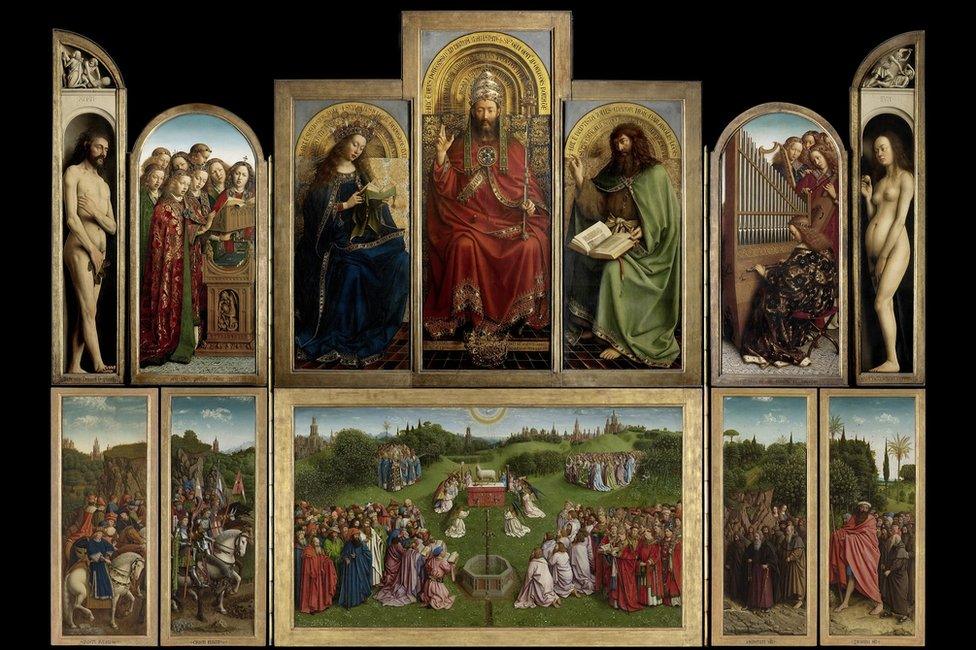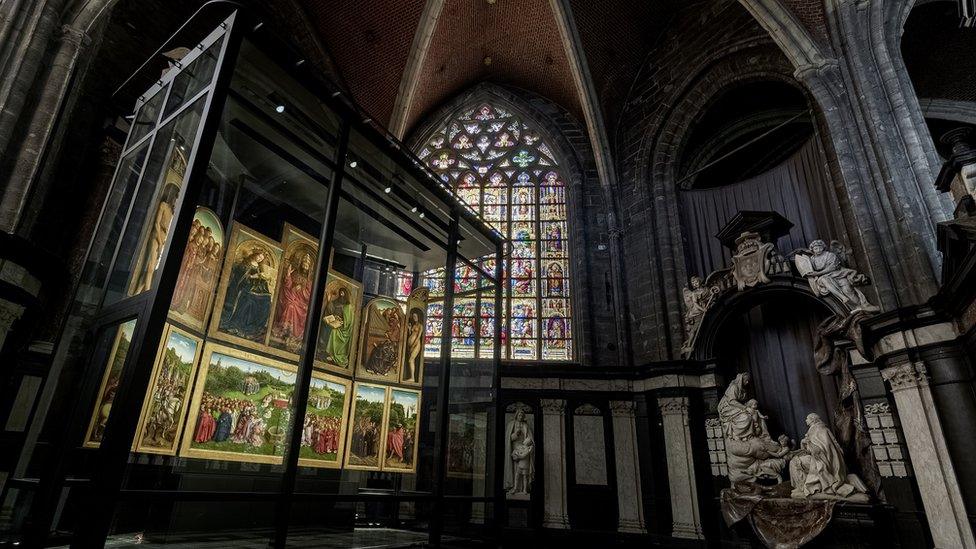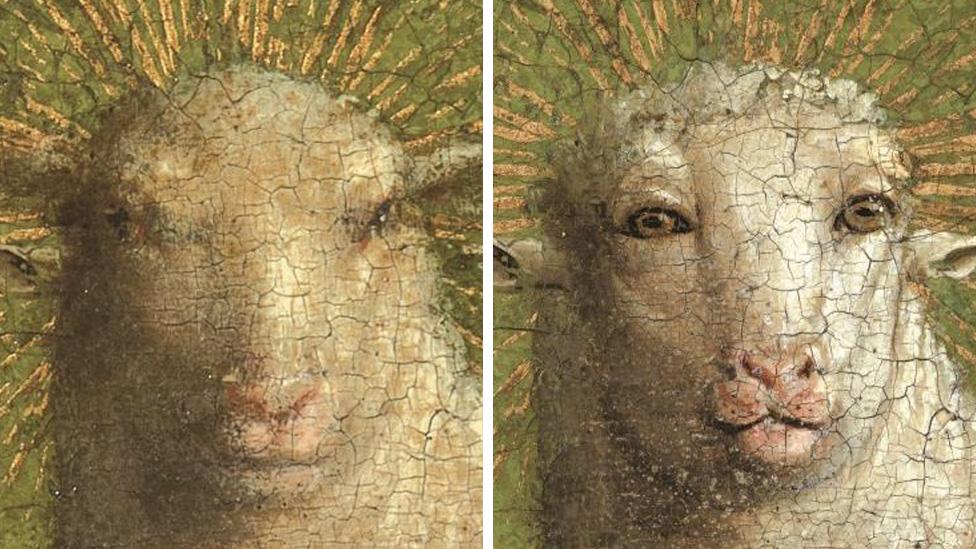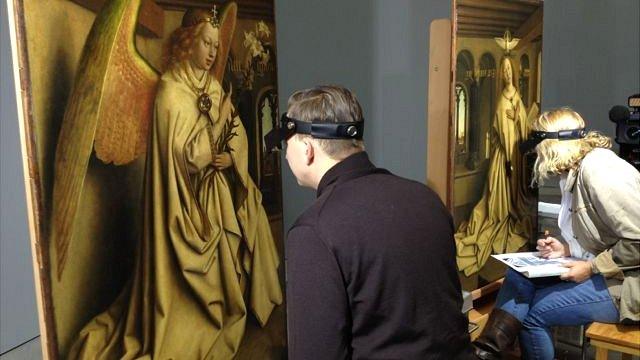Ghent Altarpiece: Prized Van Eyck oil painting finds new home
- Published

The 12-panel masterpiece was completed by the Van Eycks in 1432
Art lovers will have even better access to the famous Ghent Altarpiece thanks to a 30m euro (£26m) upgrade to the Belgian cathedral where it is housed.
The painting has been moved to a new area of St Bavo's Cathedral to create a "revolutionary" visitor experience.
Completed by Hubert and Jan Van Eyck in 1432, the painting has captivated the art world for centuries.
A seven-year, €2.2m (£1.8m) restoration project was completed in December 2019.
The revered painting's new setting was unveiled on Thursday in the presence of the Flemish Prime Minister and the Bishop of Ghent.

A new glass case has been constructed for the famous painting
It now takes pride of place in the larger space of the cathedral's Sacrament Chapel, having previously been housed in its Vijd and Villa Chapels.
A bespoke glass case has been designed to house the polyptych, which consists of 12 panels, in optimum climatic conditions.
Last year the 15th Century painting made headlines when restoration work performed on its central panel revealed its Lamb of God to have a "human-like" face.
The new visitor centre forms part of a number of Van Eyck-related events in Ghent this year that were postponed in 2020 due to the Covid-19 pandemic.


The Ghent Altarpiece or The Adoration of the Mystic Lamb is among the greatest works of art ever created.
It is epic in every sense: a double-sided, 12-panel oil painting celebrating the majesty of God the Father and telling the story of Christ's sacrifice, which, when fully extended (the panels are on hinges and can be opened and closed) measures approximately 3.5m x 4.6m.
Oil paints had been available to artists for some time when Jan Van Eyck and his brother Hubert (whose artistic contribution is still open to debate) created the work during the mid-1420s and early 1430s, but nobody had used them with the skill and ingenuity they exhibited in this painting.
It is a masterpiece of the Northern Renaissance, which sees characters depicted with a realism so true that every facial blemish is revealed, and picturesque landscapes rendered as so lifelike you can almost smell the fresh grass.
There is no detail left unattended, from the tiny jewels in the many crowns, to the decorative details on the small chalice into which the sacrificial lamb's blood pours.
It is a high-definition experience, a piece of 15th Century theatre that has been admired for centuries. Napoleon nabbed some panels, Hitler took the whole lot and put it in a salt mine in Austria (that story features in George Clooney's film Monuments Men).
Its history is almost as dramatic as the work itself, which is - without question - worth a trip to Ghent to see in the flesh.

Follow us on Facebook, external, or on Twitter @BBCNewsEnts, external. If you have a story suggestion email entertainment.news@bbc.co.uk, external.
- Published22 January 2020

- Published11 October 2012
